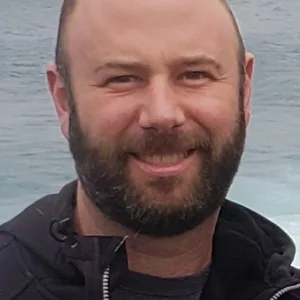eTech Learning: EV and AV Technology – John Springer, eMobility Segment Manager | Episode 93

John Springer , Dynapower’s eMobility Segment Manager, recently chatted with Ryan Maughan with the eTech Learning podcast on the current state of the Emobility market, the potential impact on the power grid, and many other interesting subjects. Below are some excerpts from the podcast – to listen to the full episode, click here.
Ryan: How did you get interested in technical content?
John: An early project that truly captured my interest was related to providing laptop batteries in large quantities to education institutions and government agencies. The problem was the battery life wasn’t long enough to be able to last through the school day. I was asked to come up with a high-capacity solution in a very short amount of time that was economical. It was a success and the experience really set my appetite on solving real world problems with realistic solutions.
Ryan: What are some interesting approaches to charging a large numbers of vehicles simultaneously…like at a busy charging station?
John: One of the things that the more intelligent site energy management software looks at today, or will look at more so in the future, is the algorithms related to dwell time? What really is the required energy requirements for the vehicle? How do you prioritize what’s coming in, what’s going out? What’s the impact on the power grid? And if you’re within a DC-DC architecture, you do also have the ability to power share amongst the other vehicles. So if everything’s plugged into a common DC bus and something’s going to sit idle for a while, that power and capacity can be reorganized into providing it to the most appropriate vehicle.
Ryan: What’s Dynapower been doing in the E-Mobility market thus far?
John: Dynapower has, with partnerships, done some larger fleet installations, one of them being the Brookville Bus Depot in Maryland, where we provided the power electronics and energy storage and worked with partners to be able to build a large bus charging depot integrating solar with DC coupled chargers.
Ryan: How can we address the challenges of powering these charging stations, and is there an impact on the power grid?
John: When you’re wanting to provide all of those DC generating assets all at a single location and wanting to have much larger fleets, then the questions of ability to integrate that on-site generation is important. And I personally feel that on-site generation is going to have to take some leaps and bounds forward just to accelerate the process of interconnection and be able to provide at those points of use the powers – the power that would be required. You can’t always rely on solar because of the physical footprint required – it’s just not realistic to think that every charging location is going to have 50 to 100 adjacent acres available to install a PV array. So what sort of generation assets can you potentially put on the site to kind of augment its capabilities and avoid negative impact on the power grid? It’s a combination of what you can get that’s available today, what will be coming in the future, how best can you integrate the renewables? Do you want to maybe integrate hydrogen fuel cells as a kind of a smaller format yet ability to be able to kind of provide that base load power?


John Springer
Emobility Segment Manager, DynapowerRyan: Looking ahead, so like what have you got coming up the next kind of year or two that you’re most excited about? What’s your outlook on the future?
John: Moving towards the high-power charging applications and being able to take a look at it, not necessarily in just terms of terrestrial vehicles, but our ownership by Sensata also provides the ability to work in other markets as it relates to high-power marine charging applications, starting the conversations with the electric aircraft manufacturers, heavy vehicles, mining equipment, and staying in what Dynapower is known to do, which is solving complicated problems with higher-power solutions. We’ve got a 60-year legacy of being able to achieve this for many, many partners over the years. So I’m really excited to be looking towards those high power applications and looking to help develop the DC coupled topologies for some of these fleet installations